Photos courtesy the Morris family
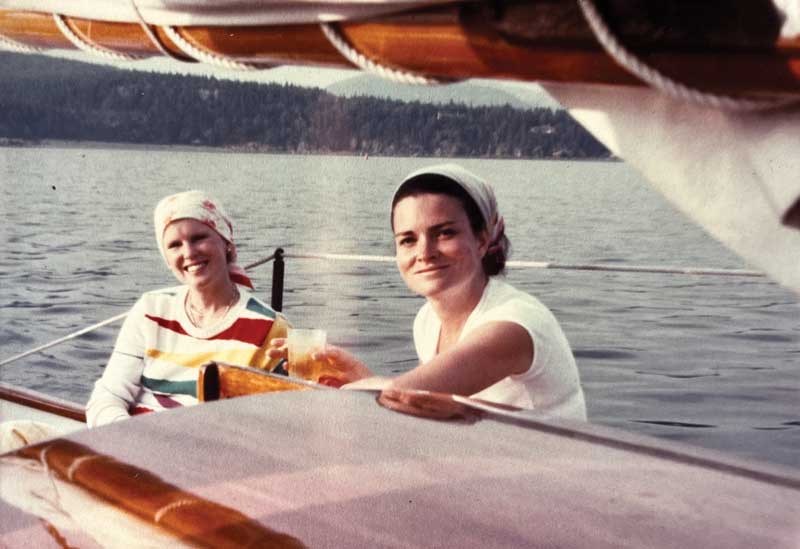
In the fall of 1972 my father, Tom Morris, left the suburbs of Philadelphia and moved us north, first to a family summer cottage, and then to a sweet white, antique clapboard cape on High Road in Southwest Harbor.
This move had been contemplated for several years and that July he made an agreement to work with local builder Jarvis Newman, who had begun building fiberglass Friendship sloop hulls in 1968. My father, who would eventually launch Morris Yachts, began his boatbuilding career by completing four of these hulls which were molded off of Old Baldy, a 25-foot sloop built by Jim Rockefeller of Bald Mountain Boat Works.
Newman built the fiberglass hulls, interior layout, and deck, and my father completed the boats from there.
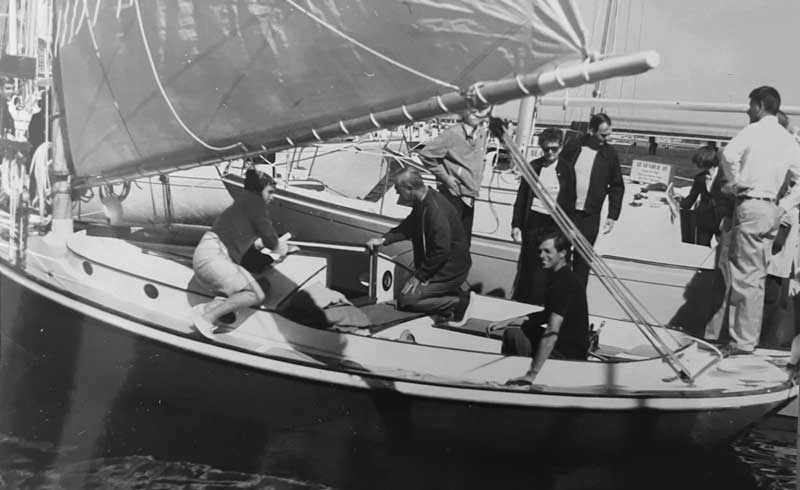
During that same summer, Jimmy Wilmerding, a seasonal resident of Northeast Harbor, joined Newman for a sail on Salatia, the first of the fiberglass sloops, and by the end of the afternoon knew that was the boat he wanted to have. He contracted and paid Newman to build him a hull and then hired my father to do the finish work. It was Dad’s introduction to boatbuilding.
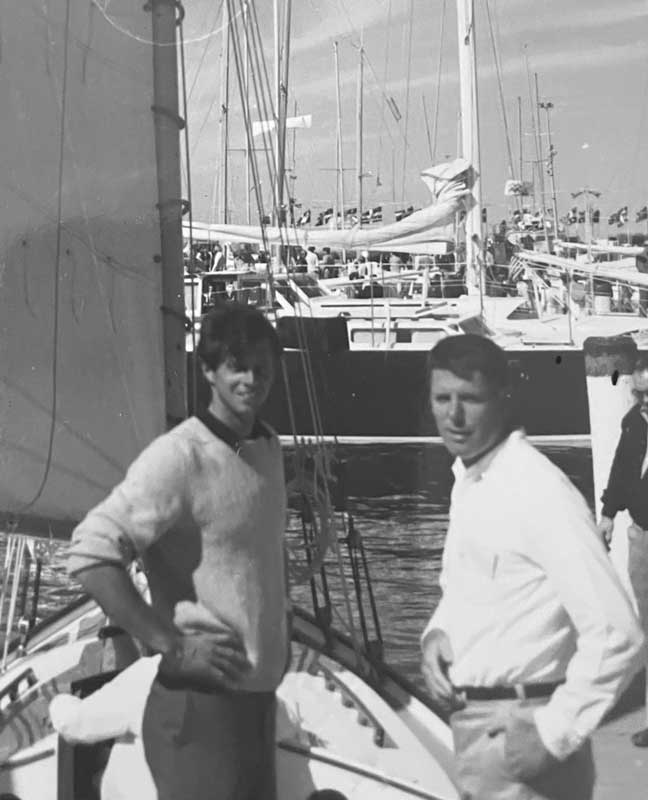
In conversations with Wilmerding, who became a family friend, I learned how the project unfolded.
After initiating construction of the boat he would name Green Pepper, Wilmerding said what he remembers most were the bills that kept arriving. My mother, Tina, hand printed all of them, with exquisite handwriting and details down to every last screw.
Wilmerding’s wife, Marsha, had a different recollection. She recalled that my mother had invited them for dinner. It was the beginning of her decades-long practice of entertaining clients for my father. Marsha said my mother made them a delicious tomato tart and that the friendship between the wives of the two sailors was anchored that night.
Green Pepper was launched in the spring of 1973, and later that summer plans were made for Wilmerding, his friend, Chris Cox, and my father to sail the boat down to the town of Friendship for the annual Friendship sloop races. Wilmerding told me the trip down was uneventful but that the race was a “rip-roaring party from start to finish.” He said he didn’t know how some of the boats even stayed on course.

However, Wilmerding had my father on board and said that his quiet, studious nature combined with a solid, gentle temperament made for a perfect sailing companion. When the proverbial “S@&^ hit,” dad rose to the occasion. Wilmerding described his grace as a sailor as, “a work of art—it was magical.”
While the men raced, the wives took the land route to Friendship in the Wilmerding’s blue VW Bug, shopping for antiques and stopping for lunch along the way.
At the end of the race day, a spontaneous decision was made to have the “girls” join the crew for the sail back north. It had been a quick two-day sail down and everyone assumed it would be the same on the way home.
But then pea-soup fog rolled in overnight, and Green Pepper’s compass was the first my father had installed on a boat. It was in the wrong location and its needle did nothing but spin, Wilmerding recalled. To fix it, the compass had been rigged to a board and brought farther aft, where the needle could do its job.
That taken care of, they set off, but there was little wind to be found. So, they motored until the exhaust coupling broke and quickly filled the boat and its cockpit with diesel fumes. Wilmerding said it was “awful,” and they had to dip into Port Clyde for repairs.
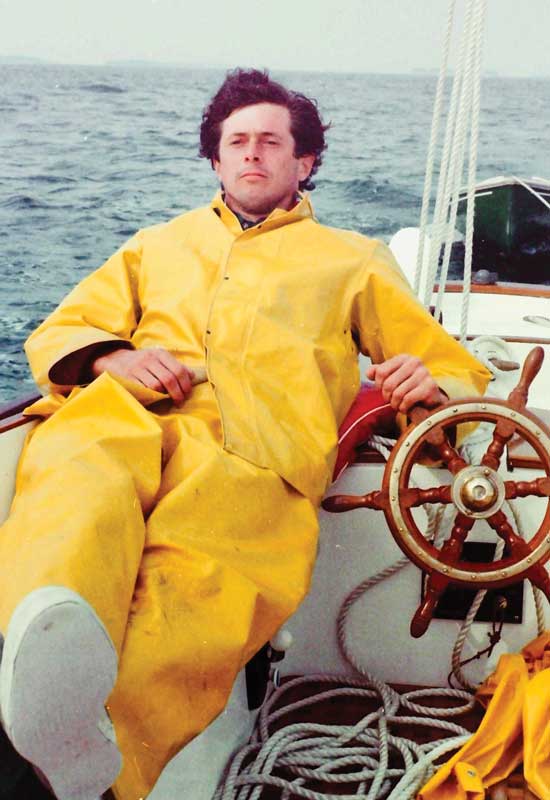
“There were six on board and three bunks,” Wilmerding said, and being “that the inn was full,” he told me that my mother and father slept in a sail bag in the cockpit. Adding to the saga, because of the last-minute decision to sail north rather than drive, the three women had only what they wore.
By the time they were on day four of what was supposed to be a quick return to Mount Desert Island, Wilmerding told me they were eating “Dinty Moore beef stew from the bilge.” Everyone was ready to get to land. So ready, in fact, that Wilmerding recalls that as soon as Marsha and my mom hit the dock, they stripped out of their salty, fog-drenched clothes and walked up the ramp arm in arm in their bras and underwear. No wonder they all became life-long friends!
Wilmerding recalled unique facts about Green Pepper. One was that the tender was a Newman-built dinghy named Indigestion. Secondly, when Green Pepper showed up at the sloop races, it was the first one to have been wired with a ham radio. Wilmerding had become a licensed radio operator the year before, and he was excited to have one on board. He and my father had muddled through wiring the radio together. Thirdly, the boat almost sank after Wilmerding returned from a cruise to Grand Manan Island and forgot to close the seacock for the head. He got a call and was told Green Pepper’s gunnels were nearly awash. The Coast Guard was hastily called to pump her out.
Lastly, and most unique of all, is that after the Wilmerdings sold Green Pepper it met its fate when it was used as a prop for interior shots on the set of Jim Carey’s infamous movie “The Truman Show.” The boat was cut into pieces to accommodate the filming. So, the first boat my father completed no longer exists.
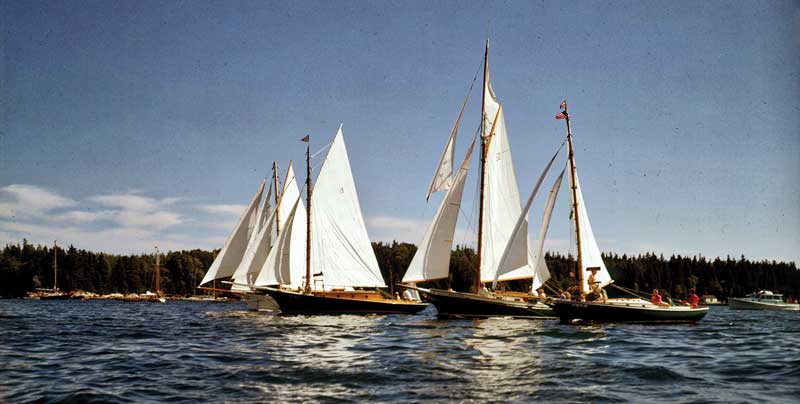
Wilmerding told me with great fondness that my father and mother greatly touched his family’s sailing and cruising life. The joy his three sons found on Green Pepper is still with them. Even when my father wasn’t on the boat, what he had built left its mark. Wilmerding’s boys still talk about their childhood cruises.
Most significantly, Nicolas Wilmerding, Jimmy’s youngest, was influenced by my father and Morris Yachts. The family had moved to Mount Desert Island during Nicholas’s high school years and the boy worked as a boat lackey at the company for a couple of summers.
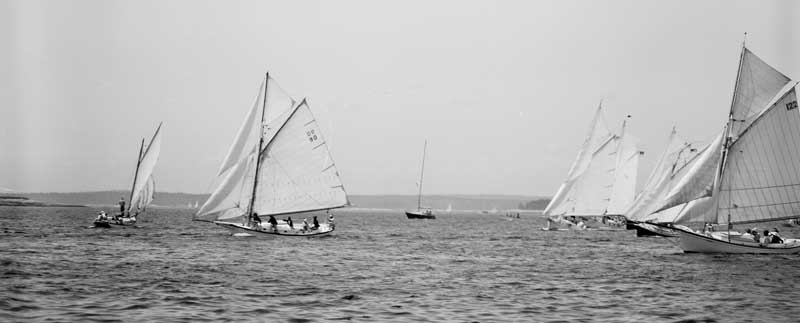
Wilmerding said he knew my dad had made an impression on Nicolas when his son decided to replace the gunwale on Indigestion, which the family had kept after Green Pepper was sold. Wilmerding said when the project was completed, the head on every single one of 300 screws was perfectly in line—“that’s who Tom was.”
Nicolas now runs NW Marine Industries on Lake Winnipesaukee in New Hampshire, and repairs anything that requires wires, particularly antique Chris-Crafts.
Just one year ago, the younger Wilmerding purchased a Cape Dory powerboat and sent his father a photo of it with an old Morris Yachts Flag flying on the bow.
Wilmerding shared with me that it was my father’s attention to details—and my mother’s care for customers—that created an incredibly personalized approach to building boats. It was a time-consuming process, but also a labor of love.
✮
Helen Morris lives inland, in Freedom, Maine, but the ocean is forever in her blood, and her memories as a boatbuilder’s daughter run deep.






